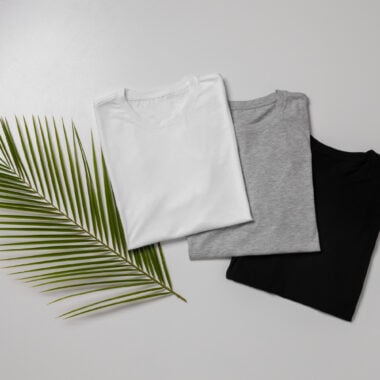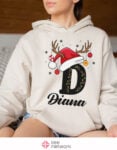Color psychology plays a crucial role in clothing printing, as different colors evoke various emotions and perceptions in individuals. For instance, red is often associated with passion and energy, while blue conveys a sense of calm and trust. Understanding these color associations can help designers effectively communicate the intended message through their clothing prints.
Moreover, color psychology can influence consumer behavior in the fashion industry. By strategically using colors in clothing printing, designers can attract specific target audiences and evoke desired emotions in consumers. For instance, vibrant and bold colors may appeal to a younger demographic, while muted tones might target a more sophisticated clientele. Ultimately, mastering color psychology in clothing printing can have a significant impact on the success of a fashion brand.
Popular Color Trends in Clothing Printing
Color trends in clothing printing are constantly evolving, reflecting the ever-changing tastes of consumers and the influences of the current cultural and social landscape. For the upcoming season, vibrant and bold colors are expected to dominate the industry, adding a sense of energy and excitement to fashion pieces. Vibrant shades of fuchsia, electric blue, and fiery red are anticipated to make a striking statement on various garments and accessories, infusing them with a sense of confidence and individuality.
On the other end of the spectrum, soft and calming pastel hues are also set to have a significant presence in clothing printing trends. Subtle shades of mint green, blush pink, and powder blue are forecasted to create a soothing and tranquil aesthetic, offering a sense of serenity in a fast-paced world. These gentle tones are likely to be popular choices for creating elegant and dreamy looks that exude elegance and an air of sophistication.
Impact of Color on Consumer Behavior in Fashion Industry
Color plays a crucial role in influencing consumer behavior within the fashion industry. Different colors evoke specific emotions and perceptions that can subconsciously sway a customer’s decision-making process. For instance, warmer tones like red and orange often convey a sense of excitement and energy, making them ideal for attracting attention and creating a bold statement in clothing prints.
On the other hand, cooler hues such as blue and green are commonly associated with feelings of calmness and trustworthiness. Brands looking to establish a sense of reliability and professionalism may opt for these shades in their clothing designs. Understanding the psychological impact of colors can help fashion businesses strategically select hues that align with their brand identity and target demographic, ultimately influencing consumer preferences and purchasing behavior.
The Psychology of Patterns in Clothing Printing
Patterns play a significant role in the world of clothing printing, impacting how a garment is perceived and how the wearer may feel. Different patterns can evoke various emotions and send different messages to those who see them. For example, stripes are often associated with professionalism and formality, while floral prints can convey a sense of femininity and elegance.
When choosing patterns for clothing printing, it is essential to consider the psychological impact they may have on the intended audience. Geometric patterns, such as chevron or houndstooth, can create a modern and dynamic look, while polka dots can add a playful and whimsical touch to a garment. Understanding the psychology behind patterns allows designers to effectively communicate their desired message through fashion.
Trending Patterns in Fashion Industry
Patterns play a significant role in the ever-evolving world of fashion. This year, we are seeing a surge in popularity of geometric prints. From bold stripes to intricate chevron designs, geometric patterns are making a statement on runways and in everyday wardrobes. The clean lines and structured shapes of these patterns add a modern and dynamic touch to any outfit.
In addition to geometric prints, floral patterns are also continuing their reign in the fashion industry. This year, we are seeing a mix of oversized blooms and dainty floral prints adorning garments of all kinds. Whether it’s a flowy maxi dress or a tailored blazer, floral patterns bring a touch of femininity and a nod to nature to any look.
How to Choose the Right Colors for Clothing Printing
When it comes to choosing the right colors for clothing printing, it’s essential to consider the overall mood and message you want to convey through your designs. Understanding the psychology of colors can be a valuable tool in selecting hues that resonate with your target audience. For example, blue can evoke a sense of calm and trust, while red is often associated with energy and passion.
Another important factor to consider when choosing colors for clothing printing is to think about the season and the current color trends. Incorporating trendy colors can make your designs more appealing and attractive to consumers. Additionally, using contrasting colors can create visual interest and make your prints stand out.
Incorporating Patterns in Clothing Design
Patterns play a crucial role in the world of fashion, adding depth and dimension to clothing designs. When incorporating patterns into clothing design, it is essential to consider the overall aesthetic and message you want to convey. Whether opting for bold, eye-catching prints or subtle, delicate patterns, each choice can evoke a different emotion and style.
Mixing patterns can create a visually appealing and dynamic look, but it requires a keen eye for balance and harmony. When combining different patterns, consider the scale, color palette, and the style of each design to ensure they complement rather than clash with one another. Experimenting with mixing stripes, florals, geometric shapes, and more can lead to unique and innovative designs that stand out in the world of fashion.
Cultural Influences on Color and Patterns in Clothing Printing
Colors and patterns in clothing printing are not just random choices made by designers; they are often influenced by the culture and traditions of a particular region. For example, in many Asian cultures, red is considered a symbol of good luck and prosperity, which is why it is commonly used in traditional clothing and textiles. Similarly, African textiles are known for their bold and vibrant colors, reflecting the rich cultural heritage of the continent.
Patterns in clothing printing also often hold cultural significance. For instance, geometric patterns are commonly found in Native American textiles, symbolizing elements of nature and spirituality. Meanwhile, floral motifs are prevalent in many European designs, representing beauty, growth, and femininity. By understanding these cultural influences on color and patterns, designers can create clothing that resonates with consumers on a deeper level, bridging the gap between fashion and cultural heritage.
Tips for Mixing Colors and Patterns in Fashion
When it comes to mixing colors and patterns in fashion, it’s important to strike a balance between boldness and cohesion. Start by selecting a dominant color from your patterned piece and use it as a base to incorporate solid colors. This will help ground your outfit while allowing the pattern to stand out.
Additionally, consider the scale of your patterns – mix larger prints with smaller ones for a visually appealing look. Don’t be afraid to experiment with colors that are complementary or analogous on the color wheel, as they can create a harmonious and sophisticated ensemble. Remember, fashion is about expressing your individuality, so have fun and trust your instincts when mixing colors and patterns!
Sustainable Practices in Clothing Printing Industry
Sustainable practices in the clothing printing industry play a crucial role in reducing the environmental impact of manufacturing processes. By incorporating eco-friendly materials and methods, companies can minimize waste and carbon emissions, contributing to a cleaner and greener future for the fashion sector. From using organic cotton and water-based inks to implementing energy-efficient production techniques, adopting sustainable practices not only benefits the planet but also appeals to environmentally conscious consumers.
As consumer awareness about sustainability grows, there is an increasing demand for ethically produced clothing. Embracing sustainable practices in clothing printing not only aligns with environmental ethics but also helps companies build a positive brand image. By showcasing a commitment to responsible manufacturing, businesses can attract a broader customer base and foster long-term loyalty among those who prioritize sustainability in their purchasing decisions.




